
Everything seems to indicate that the definitive implementation of the Ostional Wildlife Refuge Law will begin at the end of 2018. More than two years after its publication, those who live inside the protected area will be able to know whether or not they have the right to a permit or license to live and develop within the refuge.
The legislation was drafted mainly as a solution for residents of Ostional, Playa Pelada and Playa Guiones who live inside the refuge’s limits since prior to its creation in 1983.
When the law was approved, residents weren’t sure if they could stay there or not or whether the activities they were doing were compatible with the refuge’s conservation.
Yeimy Cedeño, national refuge manager, said that all the documents needed in order to begin enforcing the law in full are in their final drafting and review phase.
Among those documents is the creation of a General Management Plan which will define, among other things, where people can live and what areas are available for commercial activity such as agriculture or convenience stores.
The plan considers the creation of a zoning map divided by colors ranging from green to red. Green means that there can be no human impact in the area while the red dots indicate zones where people can live, for example.
The General Plan includes a capacity study that defines how many visitors can be on the beach and in the refuge and regulations regarding public use and sustainable development. Overall, the documents regulate all tourist activities, the number of visitors permitted and infrastructure associated with the licenses in the refuge.
Organizations have presented a draft of this plan to members of several of the communities that will be affected in an effort to answer questions and make corrections.
“The observations (from the communities) must be analyzed and, if necessary, we will do a field verification and correct what needs to be corrected,” said Cedeño.
The elaboration of these documents was done by an advisory committee for Ostional Refuge Management (CIMACO) and is made up of representatives the UCR School of Biology, the Ostional Comprehensive Development Association (ADIO), the Association of Guiones Sur Residents and the Nosara Civic Association.
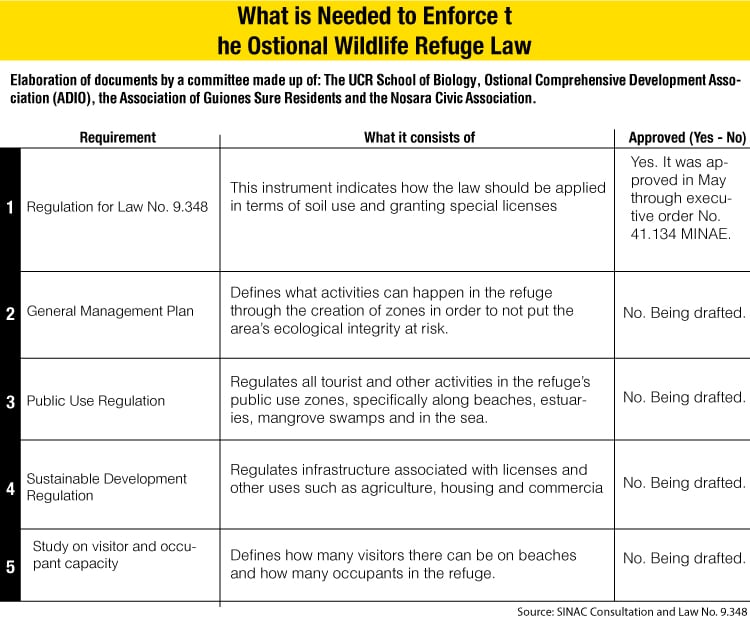
A Little More
Mauricio Méndez, deputy director of the Tempisque Conservation Area (ACT) explained that once they have the General Plan and the documents to go with it, it will be approved by the National Environmental Technical Secretariat (Setena) and the National Council of Conservation Areas (CONAC).
With the green light from these institutions, the plan must be published in the official newspaper, La Gaceta. Once published, residents will have six months to file their license requests, a time period that is expected to begin before the end of the year.
“It must be understood that the process has been delayed because these aren’t easy issues,” Méndez said. “Besides, there are people who still don’t feel comfortable with the plan, which is inevitable because the instruments affect personal interests. But the process is ongoing and moving forward.”
The Ostional Wildlife Refuge protects different marine and coastal ecosystems, particularly habitats for marine turtle reproduction.
The Licenses
What does the process for requesting and receiving a license consist of?
With the creation of the refuge, the state becomes the owner of the land and those who live within the refuge’s limits who haven’t validly registered with the National Property Registry must request a permit (a license) that grants them the right to stay on their land as long as they follow a series of conditions stipulated in the law (see chart).
Méndez explained that the law establishes different types of licenses depending on the activity that a resident wishes to develop in the area.
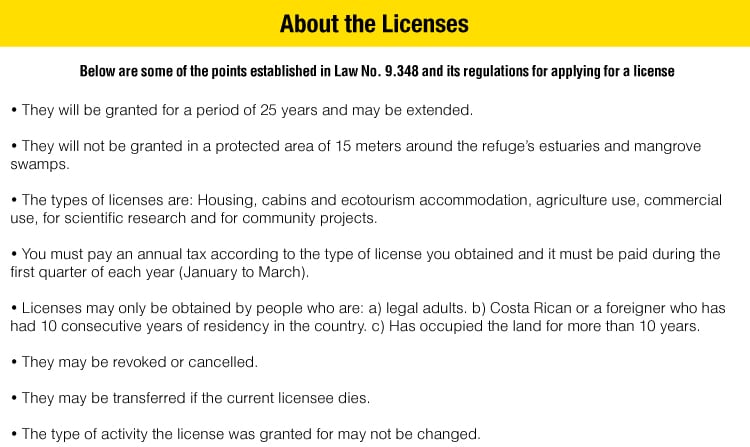
“If a person has only used the land to live on, then they will have the right to a housing license, for example,” he said. “If what they have are cabins, then they can apply for a recreation license.”
The licenses will have a cost, a tax, for each resident in the refuge. The amount owed will be defined by the type of license. According to the law, the money will be used for maintenance and conservation of the refuge.
There are currently cases of residents living in the refuge who are located in a zone where human activity isn’t permitted because of its environmental impact. If these people fulfill all the requirements for receiving a license, they must be relocated on another plot of land in the protected area.
“We have to wait and see how all these elements develop in reality,” the ACT’s deputy director said. “For now, we can say that things are becoming clearer on paper.”


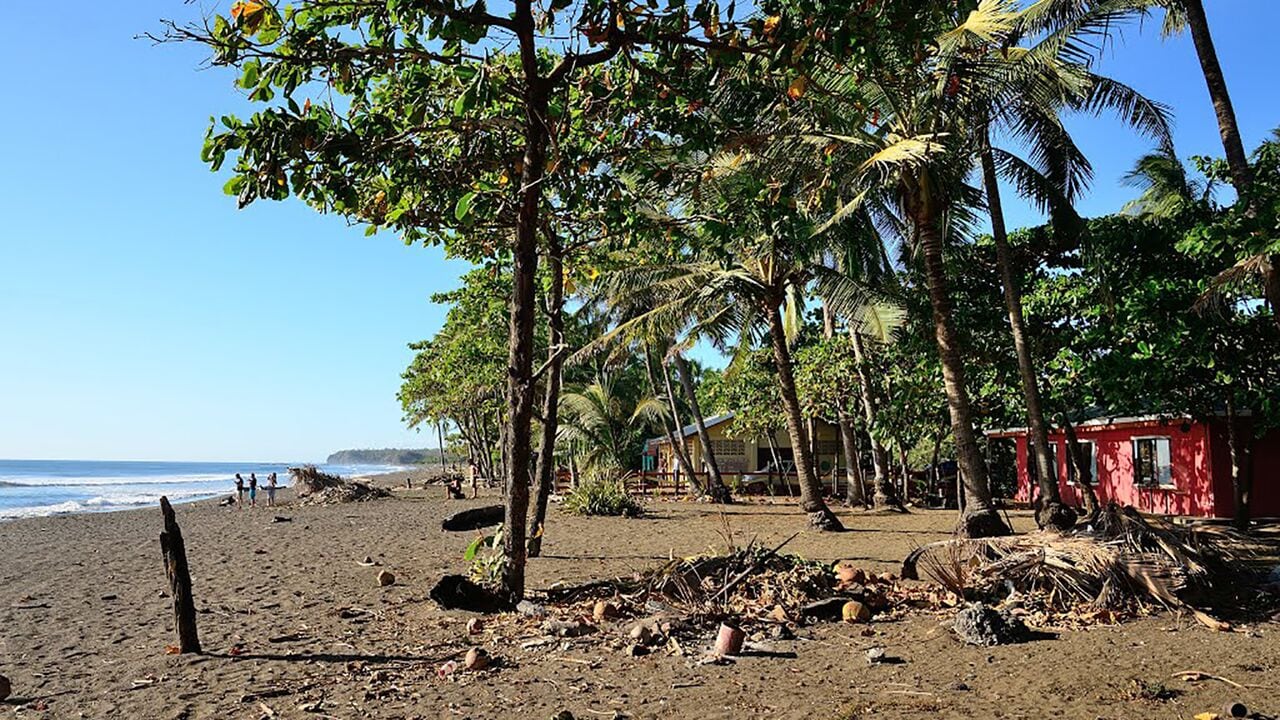
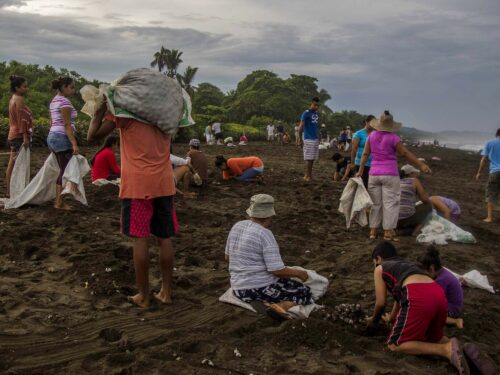
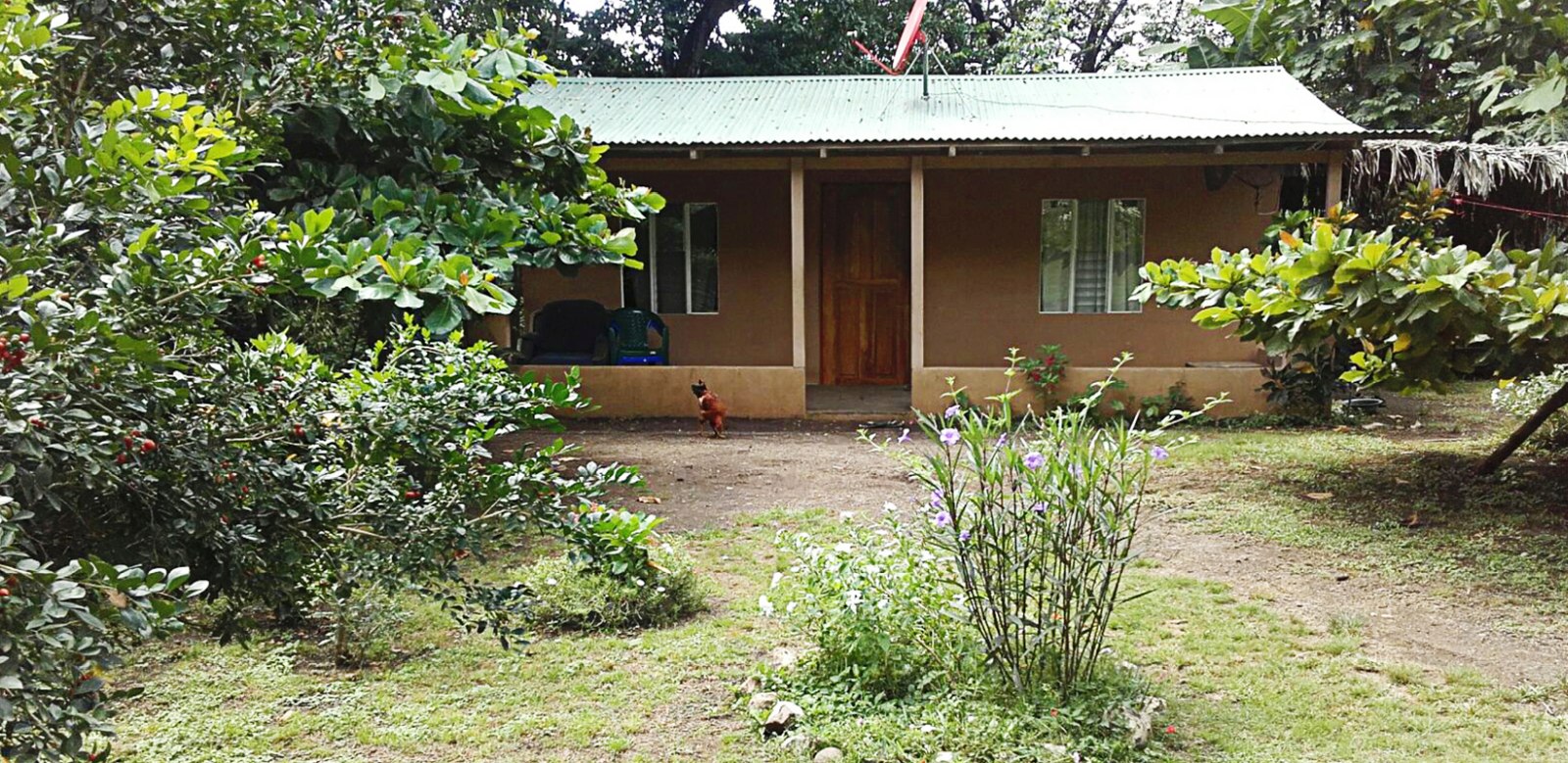
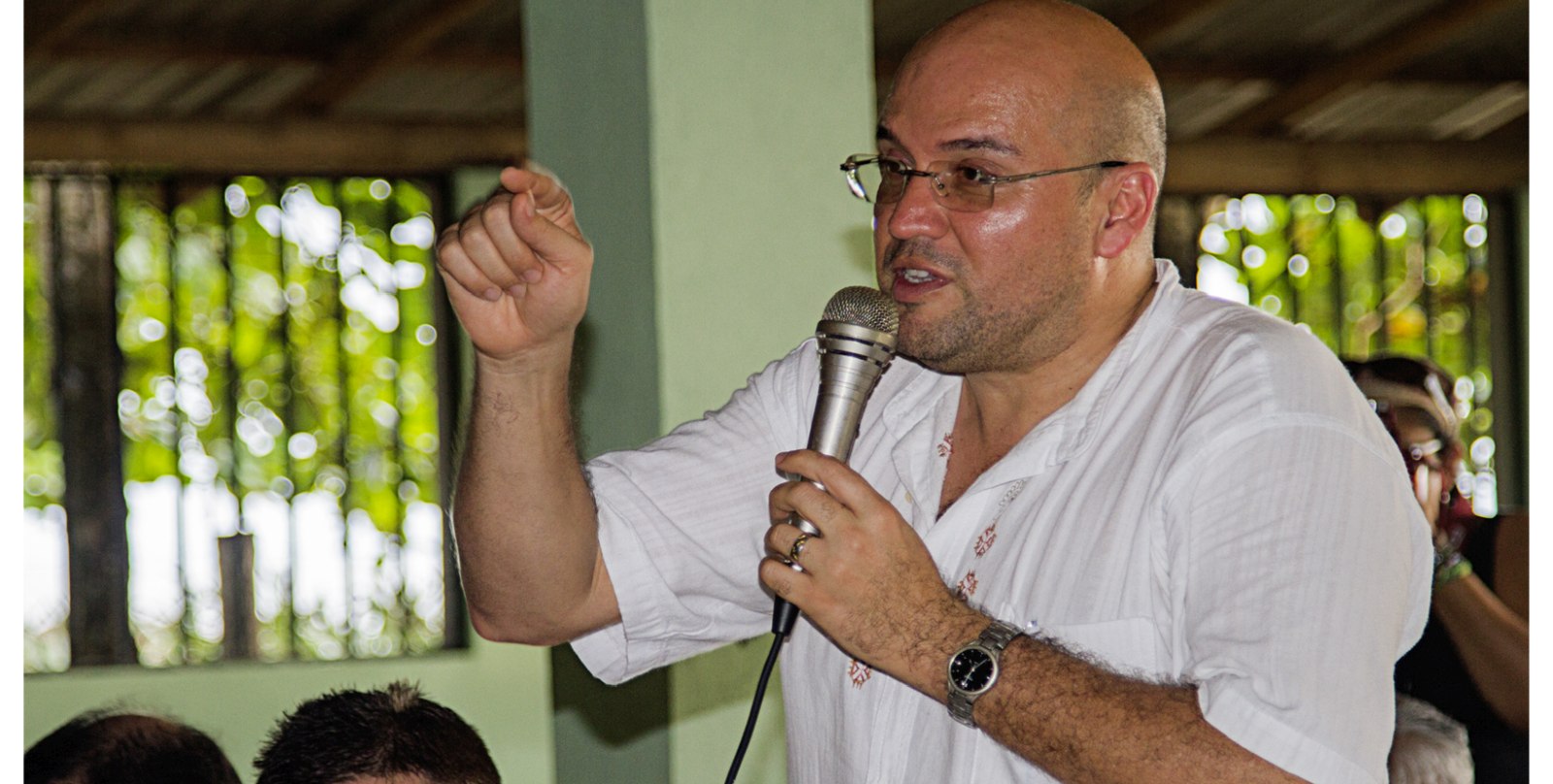

Comments